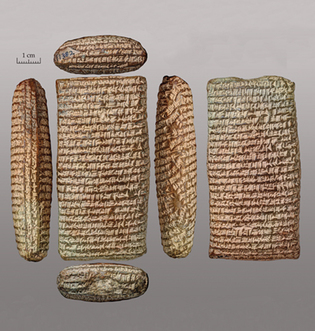
Kaus Wagensonner/Yale Babylonian Collection
If asked to name the world’s first empire, you might be tempted to say the Egyptians. Or the Persians. Or the Greeks.
But Eckart Frahm, professor of Assyriology in Yale’s Near Eastern languages and civilizations department, has a different answer. In his new book, Assyria: The Rise and Fall of the World’s First Empire, he argues that in terms of size, power, and influence, ancient Assyria—which ruled from around 2025 to 609 BCE and, at its height, spread across modern-day Iraq as far as Egypt, Turkey, and Iran—was both the world’s first empire and the main prototype for others to come.
“It is the first state that ruled over both Egypt and Mesopotamia,” Frahm says. “It was essentially all the lands from western Iran to the Mediterranean, and Central Anatolia down to the Persian Gulf. That’s a very substantial landmass.”
His argument in favor of Assyria’s role, however, goes well beyond its size. In fact, he writes, it had no end of imperial features. It was characterized by a great deal of ethnic diversity. It had sophisticated systems of bureaucracy and communication, its administration was organized by provinces, and each provincial capital was a “mini-image” of the imperial capital of Assur. And perhaps most importantly, it served as the model for future empires throughout the following centuries. Much of that, says Frahm, was because of the Persian kings, who imitated Assyrian art, construction, and perhaps even institutions.
Through the following centuries, a long chain of empires—including various Islamic empires in the East and, in the West, Rome—imitated the Persians. However, says Frahm: “Assyria remains the first piece in this chain.”
If Assyria was the world’s first empire, what can it teach us?
One lesson we might consider, Frahm says, regards how it reacted to crisis. In the eighth century BCE, it dealt with pandemics—at least two waves of plague—as well as decreasing rainfall that decimated agriculture. Faced with a loss of both labor and wealth, the king began conquering new territories and using the vanquished populations as workers.
“The Assyrians have to cope with problems very much like our own today. It actually provides a case study of what may happen,” he says. “It could be a warning. Bad actors can take advantage of such a crisis, destroy other states, and become big and powerful.”
 loading
loading